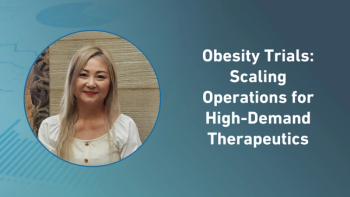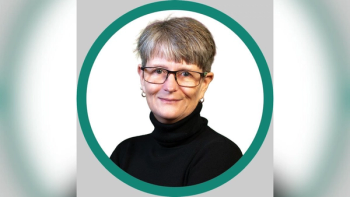
- Applied Clinical Trials-11-01-2009
- Volume 0
- Issue 0
Is an Investigative Site Shake-Out Imminent?
Economic factors and sponsor practices will dramatically alter the investigative site landscape.
The current economic climate combined with changes in investigative site selection and management practices appears to be driving a shake-out among marginal research centers in the near term. There are signs this is occurring.
Kenneth A. Getz
Recently, several large commercial IRBs noted a higher relative number of investigators exiting the enterprise. A survey conducted among 150 sites found that a greater percentage is writing off some sponsor grant obligations as bad debt. In addition, a rising number of investigators have reported that study suspensions and terminations, and slow grant payments from sponsors, have contributed to a more difficult operating and financial environment.
A shake-out may not be unwelcome. Through consolidation and a weeding-out of poorer performing and less stable sites, the investigative site landscape may be better positioned to offer higher levels of efficiency and effectiveness as the economy recovers. A look at the structure of the site landscape, current economic conditions, and sponsor/CRO strategies sheds some light on this speculative yet plausible scenario.
The landscape
Grant spending on FDA and NIH-funded clinical trials topped $9 billion in 2008 with the majority, 85%, coming from industry. But growth in spending has been slowing down. Between 2001 and 2004, sponsor spending on clinical trial grants grew 11% annually. NIH-spending during that time period grew 7.5% each year. This compares with industry funding growth of only 5% annually between 2005 and 2008 and flat growth in NIH-funding during the latter years of the Bush administration.
Data on 2009 industry grant spending is not yet available though it is expected to be as much as three percentage points lower than that observed in the prior three-year period.
Of the 27,000 FDA-regulated investigators conducting at least one clinical trial each year, the majority (75%) are in private, community-based settings. Of this latter group, a whopping 90% are single sites, most of them part-time investigators juggling clinical practice simultaneously. Why hasn't the landscape consolidated over the past decade? Why aren't there more site networks offering scale economies and centralized infrastructure?
Arguably, economics are a primary culprit. Due to high levels of turnover, the landscape receives many new investigators each year as one-third of those active in the prior year drop out. This pool of novice investigators and those with minimal clinical trial experience and infrastructure tend to undercut the more mature and established sites for clinical trial grants. Experienced site networks and high volume investigative sites have invested in infrastructure. They are not able to compete with novice sites on cost.
Historical site selection practices are another primary culprit. Many sponsors and CROs have largely viewed study conduct services as a commodities business where the lowest bid providers are often favored. As a result, sponsors and CROs have rewarded novice investigators and inadvertently stifled the growth of managed site networks and high volume dedicated and part-time sites.
Economic forces
All measures of the drug development economy are bleak. On the commercial side, total global pharmaceutical sales are expected to grow less than 1% in 2009 compared with 11% historical annual growth rates. Companies are facing what has been dubbed a Patent Cliff: Nearly $60 billion in patent protected sales is at risk of generic erosion during the next three years.
First-in-class drugs entering the market have only about one year of sales exclusivity before the next drug in that new class begins to compete. And only 20% of all approved drugs recoup their total development investment—a proportion expected to decline as more drugs in development are now targeting smaller markets.
Global drug development spending continues to rise by 11% as the rate of drug approvals is declining. Despite 7.6% annual growth in the number of new molecular entities in the development pipeline, success rates have not improved: Only 16% of all drugs entering Phase I ever make it through approval. And an increasingly restrictive regulatory environment is prompting industry to gather more clinical data pre- and postapproval.
All of these conditions have compelled sponsors to seek more ambitious and resourceful initiatives to drive faster drug development speed, and control development costs while improving data quality.
New site selection era
The adage "You Get What You Pay For" couldn't be more reflective of many sponsor–site relationships. Overall performance has often disappointed sponsors and CROs: The vast majority (more than 90%) of trials must delay enrollment for an average of six weeks. And in any given multicenter study, the same pattern is observed: 20% of sites deliver the majority of patients. Half of the sites either under-enroll or fail to enroll a single patient. And perhaps most concerning, 14% of all active INDs now have at least one complaint filed against an investigative site for noncompliance with GCP-ICH. This compares with 6% of all active INDs having at least one complaint in 2003.
Sponsors and CROs are eager to reverse these conditions. A decade ago, sponsors began placing more trials abroad where they could realize substantial savings while accelerating patient enrollment. Between 1995 and 2005, the number of countries hosting NIH- and industry-funded investigative sites doubled. At this time, nearly half of all FDA-regulated trials are conducted outside the United States. An unintended result of globalization is to divert more resources to areas lacking infrastructure.
Several years ago, sponsors also began hedging investigative site operating risk. They did so by increasing the number of sites per active clinical trial while reducing the requisite number of evaluable patients per trial. Expecting some sites to fail, many sponsors and CROs also routinely queue-up additional sites to engage as needed. Again, unintentionally sponsors have made clinical trials less economically attractive to more mature and established investigative sites.
Sponsors and CROs are now experimenting with new relationship models to nurture stronger ties with top performing sites. Sanofi-Aventis, Pfizer, Roche, and Quintiles are among a growing list of companies looking to substantially improve the probability of investigative site success. These relationships require a larger investment of personnel and resources to qualify select sites, and integrate systems and operating practices. Ultimately, sponsors and CROs hope to establish long-term, recurring, semi-exclusive arrangements with top performing sites capable of delivering higher quality clinical data faster and more efficiently.
Performance focused metrics are also playing a critical role in directing stronger, more integrated relationships. Several sponsors, for example, have embraced rapid Last-Patient-First-Visit (LPFV) targets with internal and CRO staffing incentivized to support investigative sites in order to achieve it. Sponsors and CROs are increasingly seeking fewer metrics that best tie strategic and operating goals.
Short-term shakeout
Since third quarter 2008, sponsors have been actively suspending and terminating development projects and curtailing spending. Divestitures among small biotechnology and pharmaceutical companies; consolidation and downsizing throughout the industry; and mergers and acquisitions, particularly among major sponsors, have all contributed to an unprecedented level of volatility and uncertainty.
Although speculative, the current operating conditions, combined with growing ambition among sponsors and CROs to deliver higher and more predictable levels of site performance and efficiency, will likely facilitate a shake-out in the short term. Select sponsors and CROs will opt not to engage as many novice investigators. Less experienced and marginal research centers—those that have established little to modest infrastructure—will encounter both financial difficulties and fewer grant opportunities. At the same time, more mature and established investigative sites possess the experience and capabilities to weather the storm and present a more attractive relationship partnership.
Several colleagues have asked whether this near term shake-out might be isolated to sites in the United States and Western Europe, thereby driving growth among sites in less developed regions. There are a number of factors suggesting otherwise: A large percentage of sites in emerging regions lack infrastructure making it difficult for sponsors and CROs to support more integrated relationships. The relative cost to conduct clinical trials abroad is rising rapidly at the same time that public distrust and negative perceptions of drug development companies is increasing there. Lastly, several stakeholder groups—particularly academia—have begun questioning the scientific merits and ethics of conducting clinical trials among populations abroad for drugs that will be introduced in the U.S. market.
Long-term, as the economy improves and the volume of clinical trials activity returns, a more consolidated landscape of experienced and mature investigative sites will be waiting. Indeed, in three to five years we may be looking at a very different landscape structure with a larger proportion of site networks and dedicated investigative sites integrated with sponsors and CROs committed to supporting higher performing and more efficient relationships. ?
Kenneth A. Getz MBA, is a Senior Research Fellow at the Tufts CSDD and Chairman of CISCRP, both in Boston, MA, email:
Articles in this issue
about 16 years ago
Applied Clinical Trials Digital Edition - November 2009about 16 years ago
Business and People Update November 2009about 16 years ago
Conducting Trials in Croatiaabout 16 years ago
Preparing for Postmarketabout 16 years ago
EDC Acceptance in Japanabout 16 years ago
To Market Faster In Silico Styleabout 16 years ago
Growth for Welsh Companiesabout 16 years ago
South Africa Todayabout 16 years ago
Health Issues Raise EU's Regulatory Profileabout 16 years ago
Safety Requirements Slow New Drug ApprovalsNewsletter
Stay current in clinical research with Applied Clinical Trials, providing expert insights, regulatory updates, and practical strategies for successful clinical trial design and execution.






.png)



.png)



.png)
.png)
